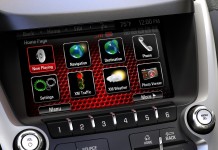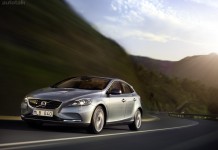Alpine is rolling out a 2010 lineup that includes an expanded selection of basic CD-receivers, new OEM-upgrade products, new driver-assistance systems and shallow high-performance subwoofers.
The products also include the company’s first all-in-one double-DIN A/V-navigation unit and first head unit with built-in Pandora Internet radio application.
To support what he called a “strong line with a lot of new products,” product promotion manager Steve Brown said Alpine will expand its dealer-training program in the coming months. Last year, the company conducted product training through its rep force and, for select larger accounts, through factory personnel. This year, the company will add factory-direct training sessions in five to six markets beginning sometime in April, Browns said.
“We want to get hands-on with the smaller dealers,” Brown said. “We can’t expect them all to come to CES.” The one-day training sessions will be split into two four- or five-hour sessions, each attracting from 50 to 60 people. Locations haven’t been announced.
New products that will get a mention during the events are two products introduced at dealer request: Alpine’s lowest-priced CD-receiver to date, the $129-suggested CDE-100, and the $399 CDA-117, which is the company’s first head unit in five or six years to incorporate built-in DSP to set equalization, crossover points and speaker time alignment. The company already offers a $179-suggested PXA-H100 Imprint outboard DSP processor that performs the same functions when added to any Alpine head unit with an Ai databus port. The Imprint uses a microphone to automatically tune a sound system, whereas in the CDA-117, installers or consumers manually enter settings without a microphone.
The CDA-117 is also Alpine’s first head unit with RDS-based iTunes tagging over analog FM broadcasts. The satellite- and HD Radio-ready CDA-117 also features 4-volt front and rear outputs.
The promotional CDE-100 at $129 is part of an expanded CDE series of basic single-DIN in-dash CD-receivers that lack the ability to add on satellite radio or HD Radio. Its front-panel USB connection is for use with music-laden USB sticks and portable hard drives. A front-panel 3.5mm input connects to portable music players.
The CDE selection goes to three from one with the addition of the CDE-100 and the $249 CDE-103BT, which is a Bluetooth-equipped version of the carryover $179 CDE-102. The 103BT and 102 feature USB connection and are certified as Made for iPod and Works with iPhone.
Although competitors offer basic CD-receivers from $100 to $120, the $129 CDE-100 sports the “quality look and feel” of Alpine’s higher end models, Brown said.
For upgrading OEM sound quality, the company introduced its second-generation OEM-upgrade DSP processor, the Imprint PXE-H660 at a suggested $549. Its input-voltage range has been widened so that, in OEM sounds systems with outboard amplifiers, consumers can continue to use the factory head’s volume control without inducing distortion, Brown said. With the previous model, consumers had to use an Alpine-supplied remote to adjust system volume without distorting the sound. The separate remote wasn’t needed, however, when the module was connected to a factory head with built-in amp.
To upgrade OEM systems with an outboard OEM amp, the module connects between the OEM amp and aftermarket amps. Installers wouldn’t remove the OEM amp because doing so might interfere with the functioning of other OEM vehicle systems on the same OEM databus. The aftermarket amp would then drive aftermarket speakers.
Similar modules offered by competitors eliminate the ability to use the factory head’s volume control when connected to an OEM outboard amp, and those models also don’t offer automated setup, Brown said. Alpine setup takes five minutes, he added.
Another new factory-upgrade device is the $119 DPR-RDS1 iPod/iPhone interface, whose FM modulator connects to a radio’s antenna input to send music to the factory radio. If the radio is RDS-equipped, the radio will also display music metadata.
In expanding its selection of driver-assistance camera systems, Alpine introduced three new models, including its first with 360-degree view around a vehicle. The 360-degree system, called a “top-view” system, uses four cameras to simultaneously display the view from all sides of a vehicle, helping consumers parallel park or change lanes without worrying about blind spots, Brown said. Another new driver-assist system is the company’s first rear-view camera system to use image processing to sense movement.
Both new camera systems connect to the RCA video inputs of the company’s A/V head units. Plans for both will be announced in September or October. No pricing has been announced, but the 360-degree-view system retails for about $2,000 in Japan, excluding installations.
A third new driver-assistance system, the $549-suggested HCE-C200R, ships in March with a multiview feature. Its rear-camera view can be switched from a standard 120-degree to 130-degree view to a split rearview to display left and right views as you back out of a parking space. It also provides a 180-degree view and a “down view,” which lets drivers check for bumper proximity when parking. An optional $499 front camera offers the same features.
In speakers, the company is launching a $449-suggested 10-inch subwoofer and $499 12-inch model whose shallow mounting depths of 3.25 inches and 3.5 inches, respectively, make them suitable for installation in pickups, compact cars, and door panels. Unlike other shallow-depth subs, the two Type-R subs deliver the same output and bass response as standard-depth 10- and 12-inch models and do so in small enclosures of 0.4 cubic feet and 0.6 to 0.7 cubic feet, respectively, Brown said. A spider that passes through the subwoofer’s frame is one element that delivers the subwoofers’ output despite the shallow depth. Competing subwoofers are limited in performance or require larger enclosures, he added.
Other new R- series subs also got an inch thinner while boosting power handling to 600 watts from 500. A new $220 12-inch sub features 6.5-inch depth, and a $200 10-inch model features 5-inch depth. Each is available in dual 4-ohm or dual 2-ohm versions.
Alpine’s first head unit with Pandora app is a disc-less “digital media receiver,” the single-DIN $399-suggested iDA-X305S. It controls Pandora’s Internet-music service when connected via supplied USB cable to an iPhone. It’s part of a four-SKU disc-less lineup that includes a carryover $249 single-DIN iDA-X303 and two double-DIN models.
The company’s first A/V head unit with built-in navigation is the double-DIN iNA-W900, replacing a pair of models with optional slide-in navigation module. “In the U.S., consumers who buy a large-screen double-DIN unit also want navigation,” and embedding navigation in the unit reduces a consumer’s cost, Brown said.
The company carried over rear-seat entertainment solutions and its add-on $449 HDD-based navigation module, launched late last year for addition to single-DIN and double-DIN nav-ready A/V head units.




